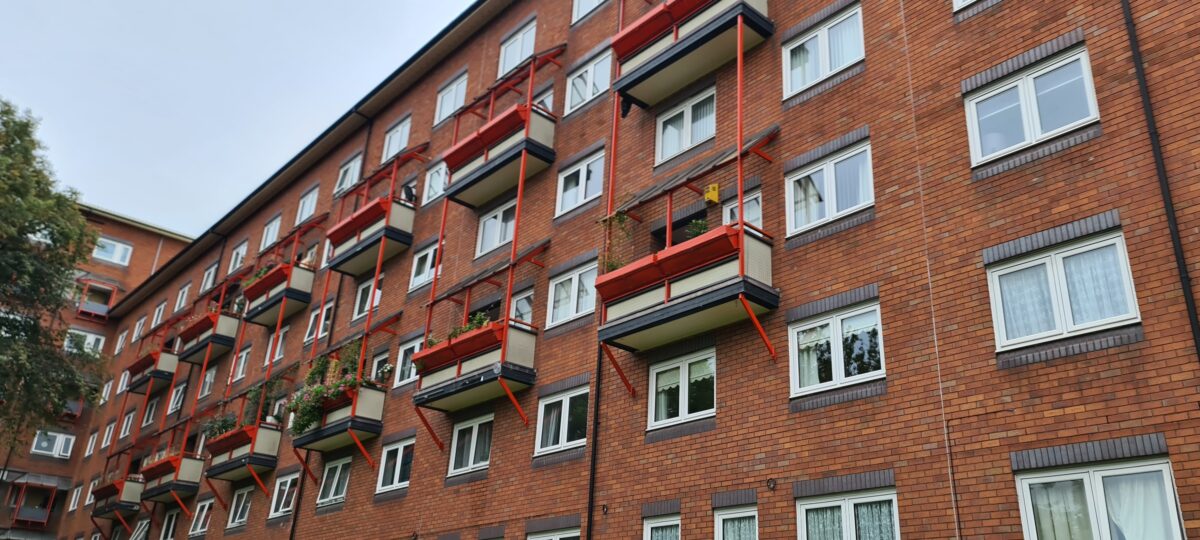The Society of Labour Lawyers (SLL) has produced a think-piece Proposals for housing law reform, containing ideas from the SLL’s housing law sub-group. Our focus is on detailed proposals for legal reform. We hope that it complements Labour Housing Group’s publication The Missing Solution: Council Housebuilding for 21st century.
SLL’ s Proposals can be read here:
https://societyoflabourlawyers.org.uk/2021/09/21/out-now-proposal-for-housing-law-reform/ .
In order to help councils purchase land and embark on significant council house building, we suggest that the Land Compensation Act (LCA) 1961 should be amended. Land could be bought at current value without additional ‘hope value’ (the ‘hope’ of estimated increased value if residential planning permission were to be granted to the landowner).
The current Empty Dwelling Management Order powers should be strengthened, so that empty properties in private ownership would be transferred to public ownership after they had stood empty for a certain number of years (one or two) (see Housing Act 2004).
Council tenancies should always be granted for life, so the power to grant flexible tenancies (fixed-term tenancies for a minimum period of two years) in the Localism Act 2011 should be repealed (not least because the Government has already announced its intention not to implement the subsequent legislation requiring flexible tenancies).
Right to Buy should be abolished in England, as it has been in Scotland and Wales, or at least very severely restricted. We call for substantial benefit reform by repealing the Bedroom Tax and benefit cap, linking Local Housing Allowance to the retail price index, Discretionary Housing Payments funded in full by government, and ending the two-child limit.
The SLL has been working with Labour’s front bench on building safety proposals. We propose that a Labour Government should follow Australia’s lead on fire safety. That would involve conducting a full audit of all residential multi-occupancy buildings regarding fire safety, assessing which buildings are the highest risk and need to be prioritised for remediation without delay, and funding remediation works in full, without reclaiming the costs from leaseholders.
Leaseholders would assign the right to sue those responsible for the defects to Government. The Limitation Act 1980 needs amendment to allow so that developers can be sued for building defects installed earlier than six years previously (the current position) or 15 years (as proposed in the Government’s Building Safety Bill).
We call for legislation so that those responsible for installing defective products can be traced, through a sometimes complex network of dissolved companies. Some costs could also be recouped by a levy on developers and product manufacturers.
We call for reforms in the area of home ownership, including a holistic review of housing costs so that home ownership becomes more affordable. The contributors support the Law Commission’s proposals to reform leasehold and make commonhold much more widely available.Specifically, planning legislation should provide that consent for new flat building would carry a legal presumption that units (including communal facilities and shops in the residential development) are held under a commonhold agreement, not leasehold.
We also call for wealth-based property taxation, through progressive council tax, and penalising owners of vacant properties (with the aim of those properties either being transferred to the public sector or available for private letting). We support London Mayor Sadiq Khan’s call for councils to buy back homes that were bought under right to buy.
In relation to the private rented sector, the SLL supports the commitment to abolishing ‘no fault’ evictions under Housing Act 1988 s21. Once section 21 possession claims are abolished, then private residential tenants will be assured tenants. In effect, therefore, there would be security of tenure in the private rented sector.
We propose that existing defences to section 21 possession claims should apply to all possession claims brought against private rented tenants, so that if the landlord has failed to comply with tenancy deposit regulations or gas safety or energy performance certificate requirements, or where possession proceedings are in response to a complaint about the condition of the property, possession cannot be ordered.
We also propose repealing the mandatory Ground 8 possession claim for assured tenants who have accrued eight weeks’ rent arrears. All grounds for possession concerning rent arrears should be discretionary, so that courts can consider the reasons for the arrears and the personal circumstances of the tenant. Along with security of tenure, Labour should introduce rent controls, with rents set by a locally based expert tribunal, taking into account the condition of the property as well as market scarcity. Labour should take steps to abolish all aspects of the ‘hostile environment’ discriminatory measures against migrants, including ending the right to rent.
The best way to reduce homelessness is to increase the supply of affordable houses, delivered through the social rented sector, and to invest in genuine homelessness prevention. With more affordable homes, the numbers of people sleeping rough or seeking homelessness help from local authorities should diminish. For those who do face the catastrophe of homelessness, the SLL proposals are that emergency accommodation should be provided to everyone who is homeless, and the tests of eligibility, priority need and ‘becoming homeless intentionally’ should be abolished.
While in emergency accommodation, everyone would receive an offer of suitable accommodation, and local authorities would be encouraged to use the Housing Firstmodel whereby the priority is to provide secure accommodation along with support to maintain the accommodation, budget etc. These proposals derive from Crisis’ Plan to End Homelessness. The punitive Vagrancy Act 1824 should be repealed and public spaces protection orders should not be used to prevent rough sleeping or begging.
None of these proposals for legal reform will work without effective, accessible legal remedies. SLL argues that dismantling the provisions of the Legal Aid, Sentencing and Punishment of Offenders Act 2012 is necessary, and that Labour’s future policy on legal services should be to restore and enhance a comprehensive system of legal aid advice and representation. The courts themselves have been beset by cuts, closures and fee increases, delaying justice and placing it further out of reach.
Labour will have to rebuild a well-functioning judicial system, and effective methods of alternative dispute resolution. Finally, there is a debate about a single-access housing court or tribunal. The authors of the SLL proposals prefer a re-invigorated county court system to a specialist housing tribunal. We emphasise that, whatever reforms are undertaken, civil justice must function as a level playing field and legal advice and representation must be adequately funded.
The proposals are put forward as personal contributions by their authors, for discussion and consideration by the Labour Party but also all those who are campaigning for better housing and a fairer justice system.





